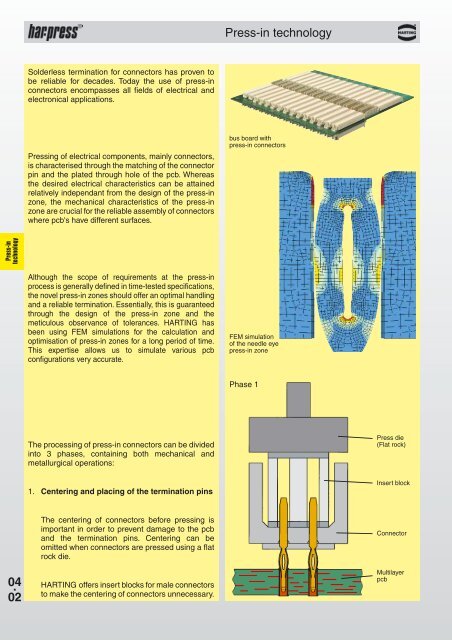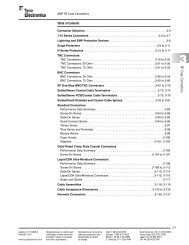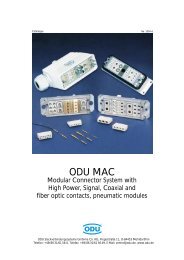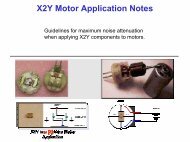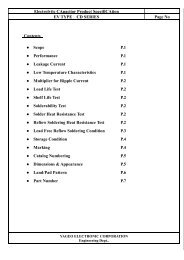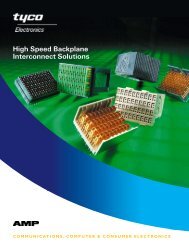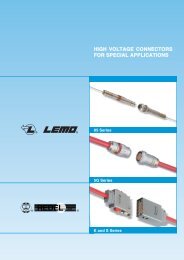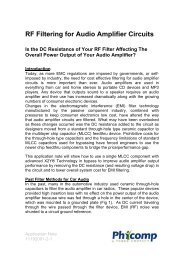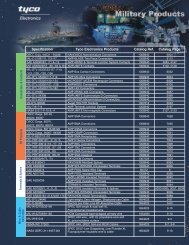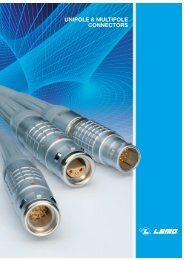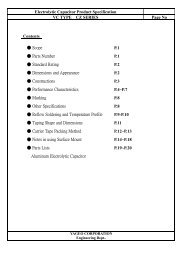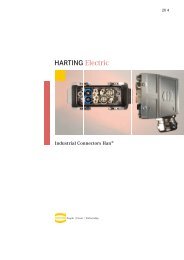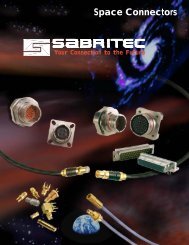04. 01 Directory chapter 04 Connectors with press-in termination
04. 01 Directory chapter 04 Connectors with press-in termination
04. 01 Directory chapter 04 Connectors with press-in termination
Create successful ePaper yourself
Turn your PDF publications into a flip-book with our unique Google optimized e-Paper software.
Press-<strong>in</strong> technology<br />
Solderless term<strong>in</strong>ation for connectors has proven to<br />
be reliable for decades. Today the use of <strong>press</strong>-<strong>in</strong><br />
connectors encompasses all fields of electrical and<br />
electronical applications.<br />
Press<strong>in</strong>g of electrical components, ma<strong>in</strong>ly connectors,<br />
is characterised through the match<strong>in</strong>g of the connector<br />
p<strong>in</strong> and the plated through hole of the pcb. Whereas<br />
the desired electrical characteristics can be atta<strong>in</strong>ed<br />
relatively <strong>in</strong>dependant from the design of the <strong>press</strong>-<strong>in</strong><br />
zone, the mechanical characteristics of the <strong>press</strong>-<strong>in</strong><br />
zone are crucial for the reliable assembly of connectors<br />
where pcb's have different surfaces.<br />
bus board <strong>with</strong><br />
<strong>press</strong>-<strong>in</strong> connectors<br />
Press-<strong>in</strong><br />
technology<br />
Although the scope of requirements at the <strong>press</strong>-<strong>in</strong><br />
process is generally def<strong>in</strong>ed <strong>in</strong> time-tested specifications,<br />
the novel <strong>press</strong>-<strong>in</strong> zones should offer an optimal handl<strong>in</strong>g<br />
and a reliable term<strong>in</strong>ation. Essentially, this is guaranteed<br />
through the design of the <strong>press</strong>-<strong>in</strong> zone and the<br />
meticulous observance of tolerances. HARTING has<br />
been us<strong>in</strong>g FEM simulations for the calculation and<br />
optimisation of <strong>press</strong>-<strong>in</strong> zones for a long period of time.<br />
This expertise allows us to simulate various pcb<br />
configurations very accurate.<br />
FEM simulation<br />
of the needle eye<br />
<strong>press</strong>-<strong>in</strong> zone<br />
Phase 1<br />
The process<strong>in</strong>g of <strong>press</strong>-<strong>in</strong> connectors can be divided<br />
<strong>in</strong>to 3 phases, conta<strong>in</strong><strong>in</strong>g both mechanical and<br />
metallurgical operations:<br />
Press die<br />
(Flat rock)<br />
1. Center<strong>in</strong>g and plac<strong>in</strong>g of the term<strong>in</strong>ation p<strong>in</strong>s<br />
Insert block<br />
<strong>04</strong> .<br />
02<br />
The center<strong>in</strong>g of connectors before <strong>press</strong><strong>in</strong>g is<br />
important <strong>in</strong> order to prevent damage to the pcb<br />
and the term<strong>in</strong>ation p<strong>in</strong>s. Center<strong>in</strong>g can be<br />
omitted when connectors are <strong>press</strong>ed us<strong>in</strong>g a flat<br />
rock die.<br />
HARTING offers <strong>in</strong>sert blocks for male connectors<br />
to make the center<strong>in</strong>g of connectors unnecessary.<br />
Connector<br />
Multilayer<br />
pcb


